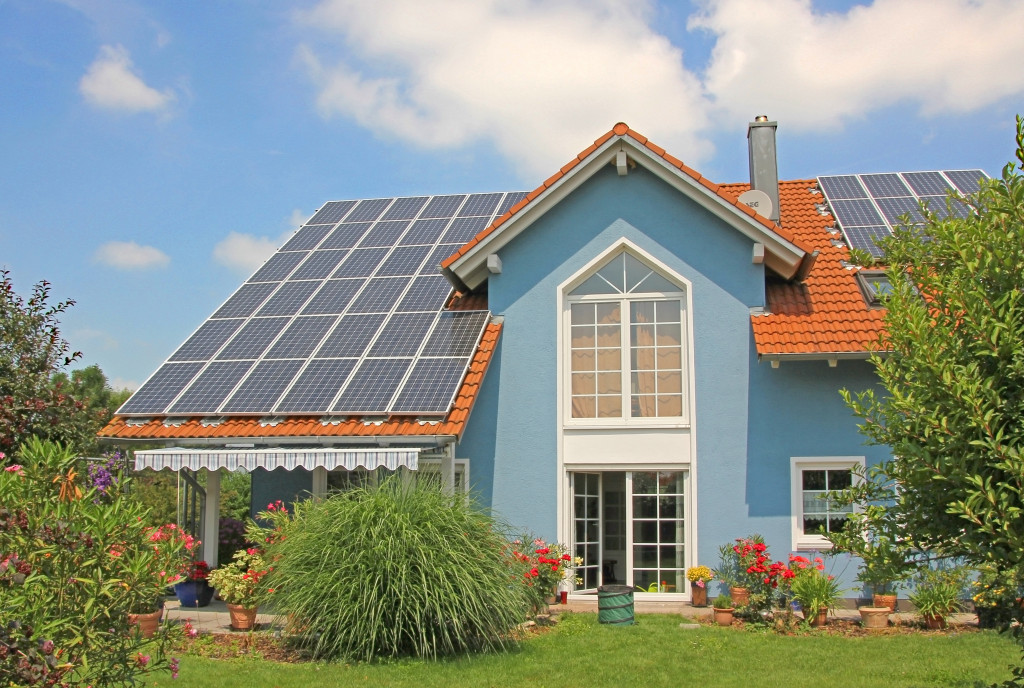Protecting the environment is becoming more critical than ever before. But how can one person make a difference? There are many ways you can start today, but the most significant change will be to your lifestyle. This article will cover some of the most effective methods for a household to make their home more environmentally friendly and sustainable.
How to Make Your Home Sustainable
1. Reduce energy consumption.
Saving energy doesn’t have to be difficult—it can be as simple as unplugging electronics when you’re not using them or turning off lights when you leave a room. If everyone in a household does their part, it can make a big difference. You can also save energy (and money) by using energy-efficient appliances and light bulbs.
2. Use solar power.
Solar power is one of the most sustainable forms of energy because it doesn’t produce pollution, and it’s practically limitless. If you live in an area with lots of sunshine, consider installing solar panels on your roof. There are also smaller solar-powered devices, like flashlights and phone chargers, that can be helpful in a power outage.
3. Plant trees around your home.
Plant trees in specific areas where they can shield your house from the sun in summer and from the cold wind in the winter. In this way, you’ll minimize your reliance on air conditioning and heating, which use much energy and money. Ensure the health of your trees by getting a certified tree surgeon for pruning and maintenance.
4. Use less water.
One of the simplest ways to be more sustainable is to use less water. That means turning the faucet off while brushing your teeth, taking shorter showers, and watering your plants during the cooler hours of the day. You can also install water-saving devices like low-flow showerheads and dual-flush toilets.
5. Get a rainwater tank.
Installing a rainwater tank can save you money and help the environment by reducing the strain on local water resources during dry periods. You can use the collected water for watering your garden or washing your car.
6. Grow your food.
Homegrown food is usually tastier and fresher than store-bought. It can also save you money and reduce your carbon footprint. If you have the space, consider planting a vegetable garden in your yard. If not, there are many ways to grow food indoors, like on a windowsill or in a hydroponic system.
7. Compost your food waste.
Start a compost bin for your kitchen scraps and yard waste. That will reduce the amount of landfill waste and provide you with nutrient-rich soil for your garden. There are many apartment-friendly alternatives, like vermicomposting with worms, if you don’t have space for a compost bin.

8. Reduce your meat consumption.
Eating less meat is not only better for your health, but it’s also more sustainable. The production of meat—particularly beef—requires a lot of resources, like land, water, and feed. So by eating less meat, or even better, no meat, you can help reduce your environmental impact.
9. Buy in bulk.
When shopping for groceries and other household items, try to buy in bulk. That will save you money and trips to the store, and it often generates less packaging waste. If you don’t have enough storage space for large quantities, see if you can split the cost and purchase with a friend or neighbor.
10. Shop secondhand.
Before buying new clothes, furniture, or other items, see if you can find them used. There are many great secondhand stores and online marketplaces like Craigslist and eBay. Not only is shopping secondhand better for the environment, but it’s also usually cheaper.
11. Recycle and upcycle.
Make sure to recycle everything you can, from paper and plastic to glass and metal. And if you’re feeling creative, you can upcycle items instead of throwing them away—for example, turning an old shirt into a pillowcase or making a lamp out of a Mason jar.
12. DIY when you can.
There are many things you can make yourself instead of buying them, like cleaning supplies, beauty products, and even furniture. That is usually cheaper than buying the store-bought version. It’s also more sustainable since you’re not generating as much packaging waste.
13. Support local businesses.
Buy food and other products from local businesses whenever possible. That cuts down on the pollution caused by transportation and helps to boost the local economy.
14. Use natural cleaning products.
Many sustainable cleaning alternatives to harsh chemicals can be just as effective—and often cheaper. For example, vinegar can be used as a disinfectant, while baking soda is excellent for cleaning surfaces. You can find recipes online for DIY cleaning solutions using ingredients like lemon, essential oils, and borax.
15. Drive less.
Walk, bike, or take public transportation instead of driving. That will help reduce air pollution and save you money on gas. If you must drive, try carpooling or driving a more fuel-efficient vehicle.
Do Something Sustainable Every Day
What you do every day impacts the world around you – from driving less and eating less meat to growing your food or switching out light bulbs. By making small changes in your life, you can help contribute toward sustainability for future generations of people who deserve clean air and water. So if you haven’t yet begun trying these tips yourself, consider this a call to action for both yourself and the planet.

